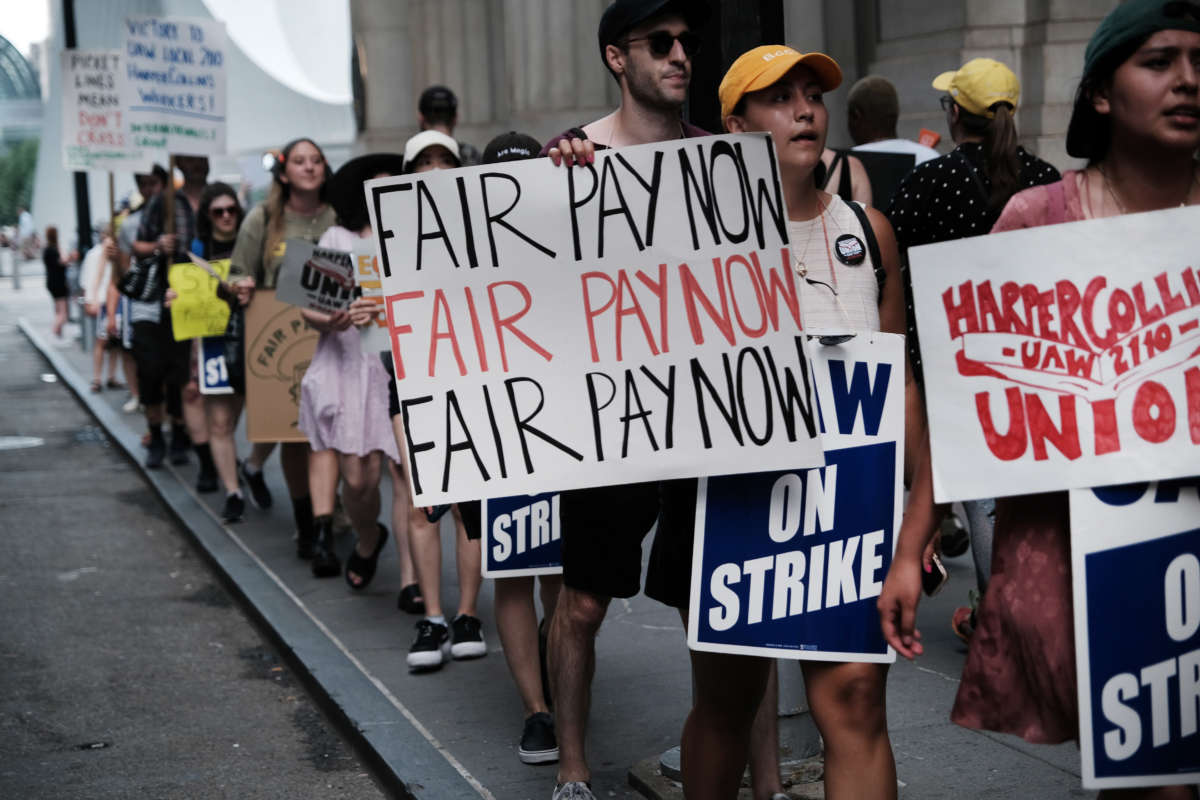U.S. workers have waged more strikes in the first nine months of 2022 than in all of 2021, data shows, lending evidence to unions’ and activists’ observations that the labor movement is undergoing a resurgence.
According to Cornell University School of Industrial and Labor Relations’s (ILR) Labor Action Tracker, between January and the end of September, there were 288 strike actions across the U.S. and its territories. In all of 2021, researchers tracked about 260 strikes and work stoppages.
The strikes have also grown in size this year. In the first half of 2022, there were about 180 strikes involving 78,000 workers, according to the tracker. That’s triple the number of people, about 26,500 workers, who went on strike in the first half of 2021. About 140,000 workers participated in work stoppages over the course of 2021, logging over 3.2 million strike days.
Recent months have seen several major strikes, including several teachers’ strikes and the Minnesota nurses’ strike last month. About 15,000 nurses went on strike in mid-September, marking the largest-ever private sector nurses’ strike in U.S. history. Starbucks workers in Boston recently ended the company’s longest-ever strike after winning several concessions.
In all, the total number of strikes this year is on track to far outnumber the number of strikes from last year. October of 2021, dubbed “Striketober” by labor activists, did indeed see increased strike activity, and this year’s “Striketober” could see another flurry of labor protests.
Graduate workers at Clark University and Indiana University have authorized or may be authorizing strikes. Thousands of Kroger employees in Ohio may strike after voting to authorize one last month. Railroad workers across the country, meanwhile, may still go on strike as workers say railroads continue to stonewall them on key provisions. And there are a number of ongoing strikes and ongoing strike actions that are likely to continue into this month.
The data provides concrete evidence that the labor movement is on the rise, as advocates have observed. Though the proportion of workers who belong to a union has declined over the past decades, hitting a mere 10.3 percent last year, labor organizers have spent this year notching high-profile wins in workplaces like Starbucks, Amazon and even Congress.
These labor fights have likely contributed to a rise in the public’s approval of unions. A Gallup poll released in August found that 71 percent of Americans now say that they approve of unions — the highest approval rate recorded in 57 years, and close to the all-time high of 75 percent recorded in the mid-1950s. Further, workers who aren’t unionized want to join a union; of non-union workers in that survey, 42 percent said they were interested in unionizing.
The increase in labor activity may be due to unprecedented economic circumstances posed by the pandemic, partnered with runaway capitalism and increasingly exploitative working conditions. With soaring corporate greed-driven inflation and decades of stagnant wages, workers are finding themselves with an elevated level of power and leverage.
Indeed, the data lines up with recent statistics from the National Labor Relations Board (NLRB) showing that union filings are also on the rise. This summer, the NLRB reported that, in the first nine months of Fiscal Year 2022, or between October 2021 and June 2022, union petitions were up 58 percent over the same period of Fiscal Year 2021. Workers are also fighting back against potential violations of federal labor laws, with unfair labor practice charges up 16 percent over the same time frame.
Join us in defending the truth before it’s too late
The future of independent journalism is uncertain, and the consequences of losing it are too grave to ignore. To ensure Truthout remains safe, strong, and free, we need to raise $17,000 by midnight tonight. Every dollar raised goes directly toward the costs of producing news you can trust.
Please give what you can — because by supporting us with a tax-deductible donation, you’re not just preserving a source of news, you’re helping to safeguard what’s left of our democracy.
